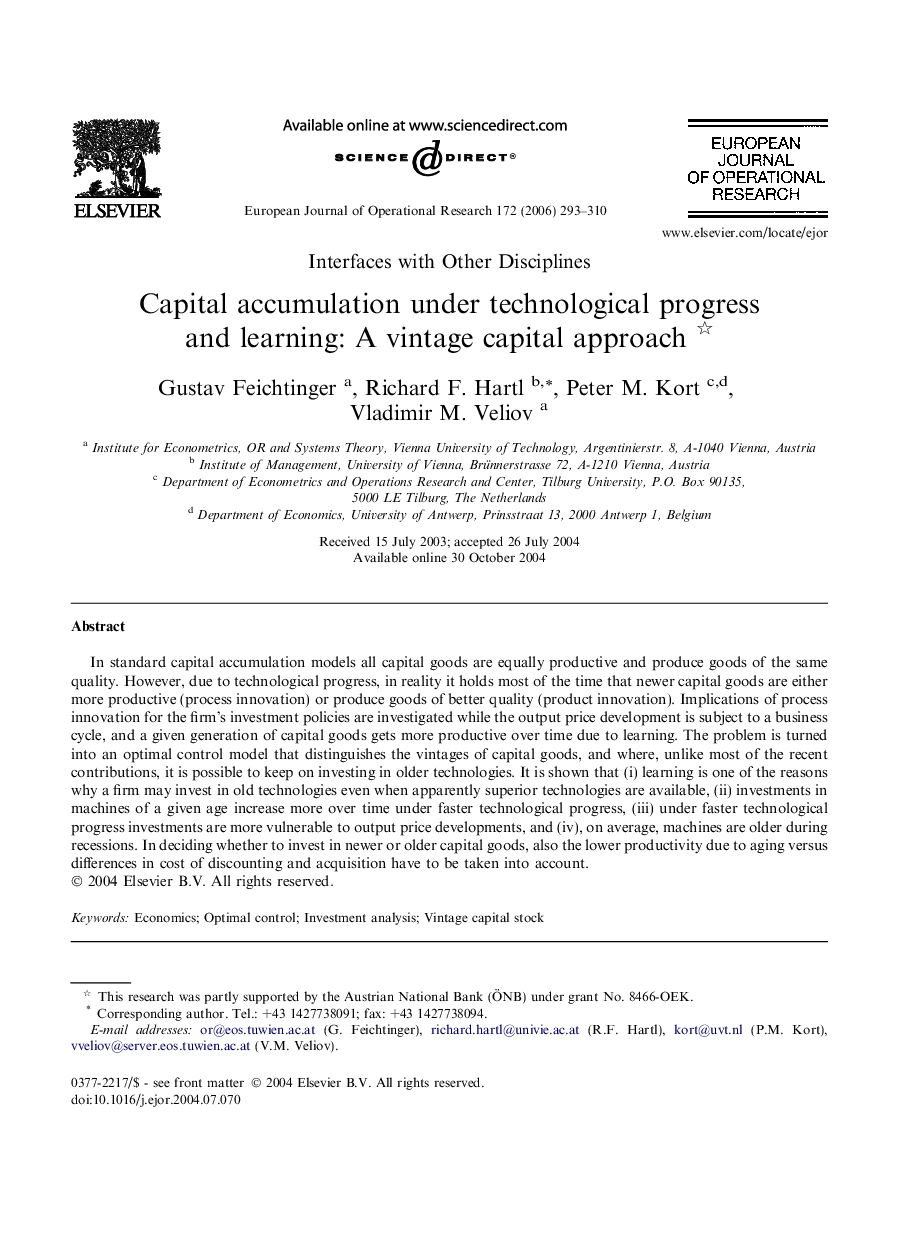| Article ID | Journal | Published Year | Pages | File Type |
|---|---|---|---|---|
| 482824 | European Journal of Operational Research | 2006 | 18 Pages |
In standard capital accumulation models all capital goods are equally productive and produce goods of the same quality. However, due to technological progress, in reality it holds most of the time that newer capital goods are either more productive (process innovation) or produce goods of better quality (product innovation). Implications of process innovation for the firm’s investment policies are investigated while the output price development is subject to a business cycle, and a given generation of capital goods gets more productive over time due to learning. The problem is turned into an optimal control model that distinguishes the vintages of capital goods, and where, unlike most of the recent contributions, it is possible to keep on investing in older technologies. It is shown that (i) learning is one of the reasons why a firm may invest in old technologies even when apparently superior technologies are available, (ii) investments in machines of a given age increase more over time under faster technological progress, (iii) under faster technological progress investments are more vulnerable to output price developments, and (iv), on average, machines are older during recessions. In deciding whether to invest in newer or older capital goods, also the lower productivity due to aging versus differences in cost of discounting and acquisition have to be taken into account.
